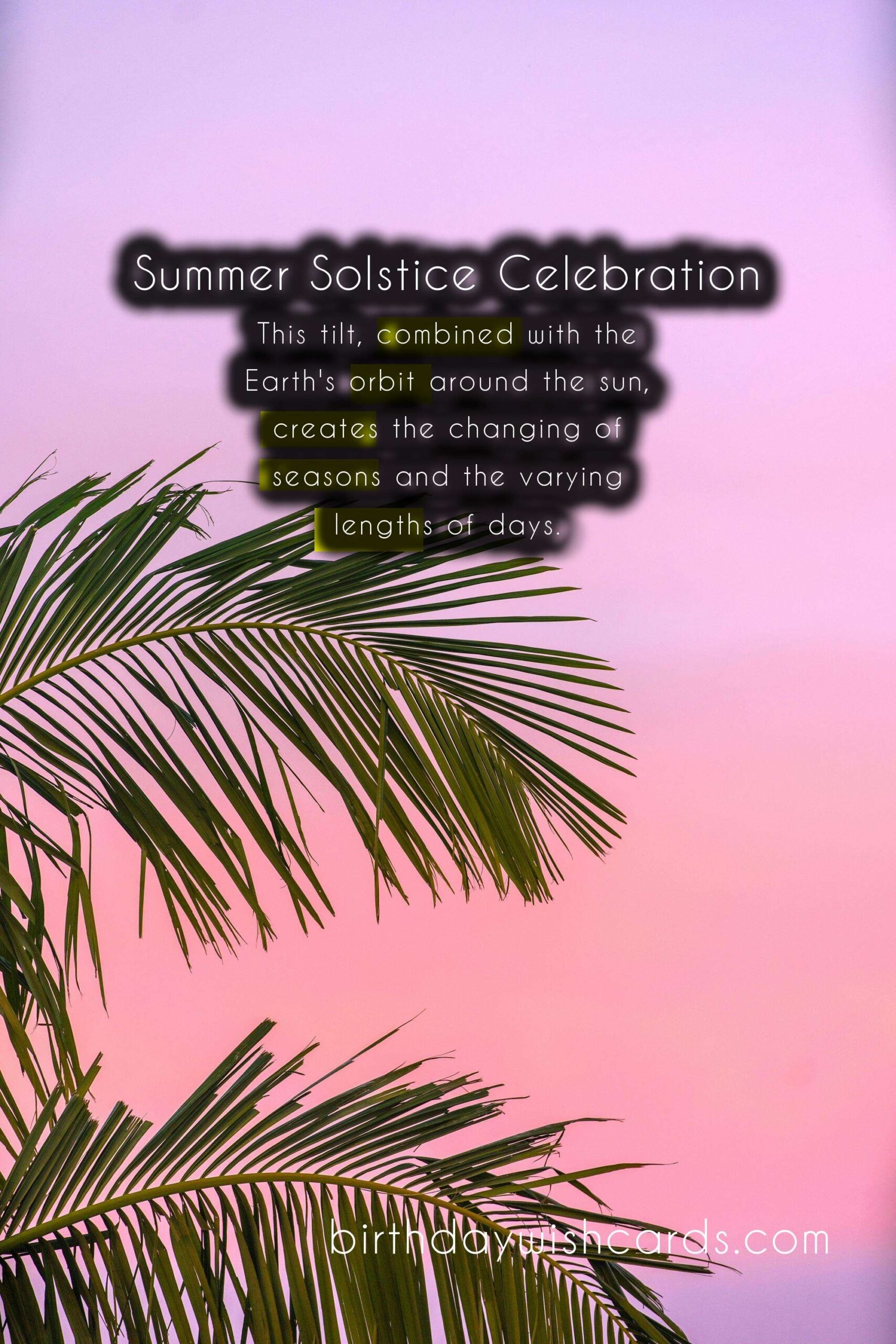Summer Solstice – A Day of Celebration and Significance
The summer solstice, occurring on June 21, is the longest day of the year and marks the official start of summer in the Northern Hemisphere. This day is also known as midsummer and has been celebrated for thousands of years by various cultures. It holds great significance in astronomy, mythology, and even modern traditions. Let’s take a deeper look into the history and traditions of this special day.
The word ‘solstice’ comes from the Latin words sol, meaning sun, and sistere, meaning to stand still.
During the summer solstice, the sun is at its highest point in the sky and appears to stand still for a brief moment before gradually descending towards the horizon.
This phenomenon occurs because the Earth’s axis is tilted at 23.5 degrees.
This tilt, combined with the Earth’s orbit around the sun, creates the changing of seasons and the varying lengths of days.
The summer solstice is celebrated all around the world, with a wide range of cultural and traditional practices.
In ancient times, the summer solstice was a time of great celebration and feasting.
The ancient Egyptians, for example, held a festival to honor the god of fertility and agriculture, which involved making offerings to the Nile River.
The ancient Romans celebrated with a week-long festival called Vestalia, dedicated to the goddess Vesta.
In more recent history, the summer solstice has been celebrated as a Christian holiday, known as St. John’s Eve or Midsummer’s Eve.
Many modern celebrations, such as bonfires and dancing, are believed to have their roots in various pagan traditions.
Today, the summer solstice is still viewed as a time of joy and celebration, with many people gathering for festivals and gatherings.
The longest day of the year is seen as an opportunity to enjoy the warm weather and outdoor activities.
Apart from its cultural and traditional significance, the summer solstice also holds a special place in astronomy.
This day marks the official start of summer, as well as the point where the Earth is tilted closest to the sun.
The solstice is also a crucial time for farmers, as it marks the beginning of the summer growing season.
This shift in season is often seen as a symbol of new beginnings and growth.
On a more introspective and spiritual level, the summer solstice also represents a time of balance and unity.
It is a reminder of the cyclical nature of life and the constant quest for harmony and equilibrium.
As the sun reaches its peak, it is a time to reflect on the light within us and align our bodies and minds with the natural rhythms of the Earth.
In many cultures, the summer solstice is also viewed as a time of renewal and purification.
One popular tradition is to jump over a bonfire, which is believed to cleanse and ward off any negative energy.
Lastly, the summer solstice serves as a powerful reminder of the interconnectedness of all things.
As we bask in the warmth and light of the sun, we are reminded of our connection to nature and to each other.
This is a time to celebrate the beauty of the world and all the wonders it has to offer.










#SummerSolstice #Midsummer #LongestDay #Balance #Renewal







